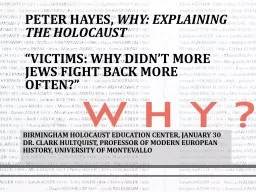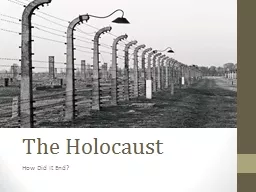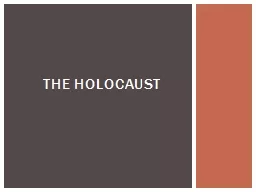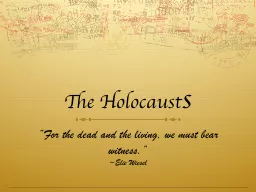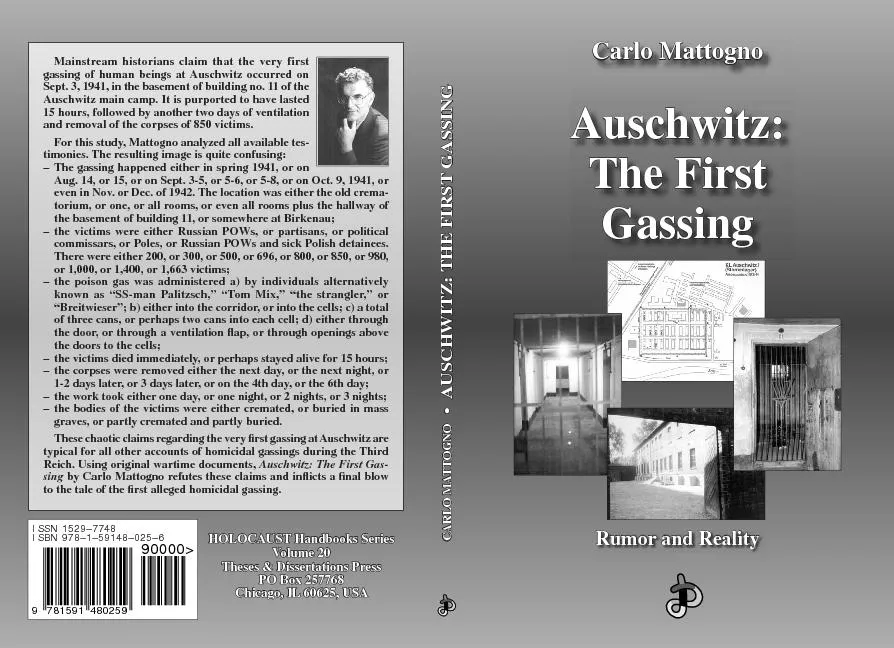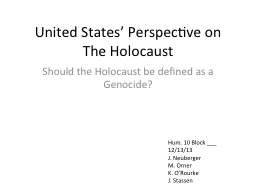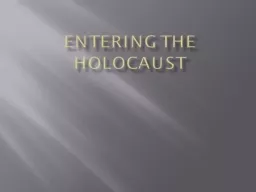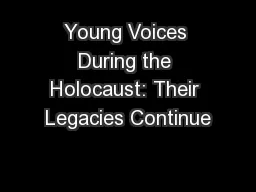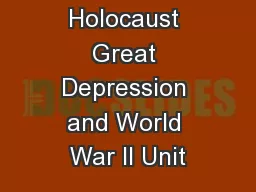PPT-Peter Hayes, Why: Explaining the Holocaust
Author : dsuser1 | Published Date : 2020-09-29
Victims Why Didnt more Jews fight back more often Birmingham Holocaust Education Center January 30 Dr Clark Hultquist Professor of Modern European History University
Presentation Embed Code
Download Presentation
Download Presentation The PPT/PDF document "Peter Hayes, Why: Explaining the Holoca..." is the property of its rightful owner. Permission is granted to download and print the materials on this website for personal, non-commercial use only, and to display it on your personal computer provided you do not modify the materials and that you retain all copyright notices contained in the materials. By downloading content from our website, you accept the terms of this agreement.
Peter Hayes, Why: Explaining the Holocaust: Transcript
Download Rules Of Document
"Peter Hayes, Why: Explaining the Holocaust"The content belongs to its owner. You may download and print it for personal use, without modification, and keep all copyright notices. By downloading, you agree to these terms.
Related Documents

